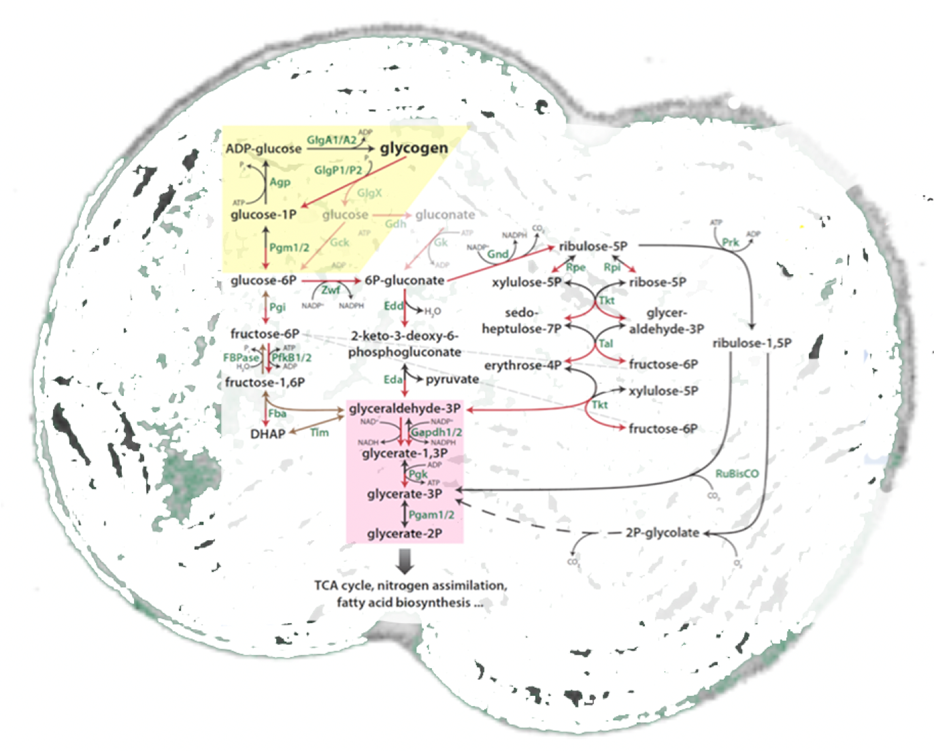Research Concept
Cyanobacteria are the primordial photosynthetic organisms on earth. Their outstanding ecological impact is based on a metabolism, which converts carbon dioxide and water into organic material with concomitant release of oxygen only using light energy. Moreover, they are explored as green cell factories for a future sustainable economy. Recent research revealed that central metabolism in cyanobacteria is far more complex than assumed for long time. They switch between photoautotrophic (CO2-fixing) and multiple heterotrophic (CO2-generating) modes of metabolism during day/night or other changing environmental conditions, with the enzymatic equipment for the antagonistic pathways being present in one cell. That a single cell can manage such a metabolic diversity requires coherent decisions at multiple layers of cellular functions in response to specific external and internal stimuli.
To resolve the molecular mechanisms operating these processes, an interdisciplinary team that covers the relevant expertise joined forces.
The Research Group FOR2816 “The Autotrophy-Heterotrophy Switch in Cyanobacteria: Coherent Decision-Making at Multiple Regulatory Layers” (short "SCyCode") addresses the regulatory mechanisms and decision making processes, underlying the switch between autotrophic and heterotrophic (i.e. glyconeogenetic - glycolytic) carbon metabolism in response to internal (cellular) and external (environmental) factors.
We address the function and control of key enzymes, pathways and regulators of C-metabolism and their interplay to unveil the (hidden) regulatory layers that organize the central metabolic routes. Therefore, the consortium, composed of experts with complementary skills, will use the model strain Synechocystis sp. PCC 6803 for an integrative application of advanced biochemical, transcriptomic, fluxomic, and proteomic methods.
External factors include variations in inorganic carbon, nitrogen and light availability. Cellular constraints arise from growth phase, cell cycle or accumulated storage compounds. Cyanobacterial carbon metabolism is pivotal for the global carbon cycle and is evolutionarily related to CO2 assimilation in plants. Moreover, its understanding is crucial for the application of cyanobacteria as green cell factories.
 Schematic view of primary carbon metabolism in cyanobacteria. The central hubs are the glycogen hub (yellow) and the triosephosphate hub (pink).
Schematic view of primary carbon metabolism in cyanobacteria. The central hubs are the glycogen hub (yellow) and the triosephosphate hub (pink).